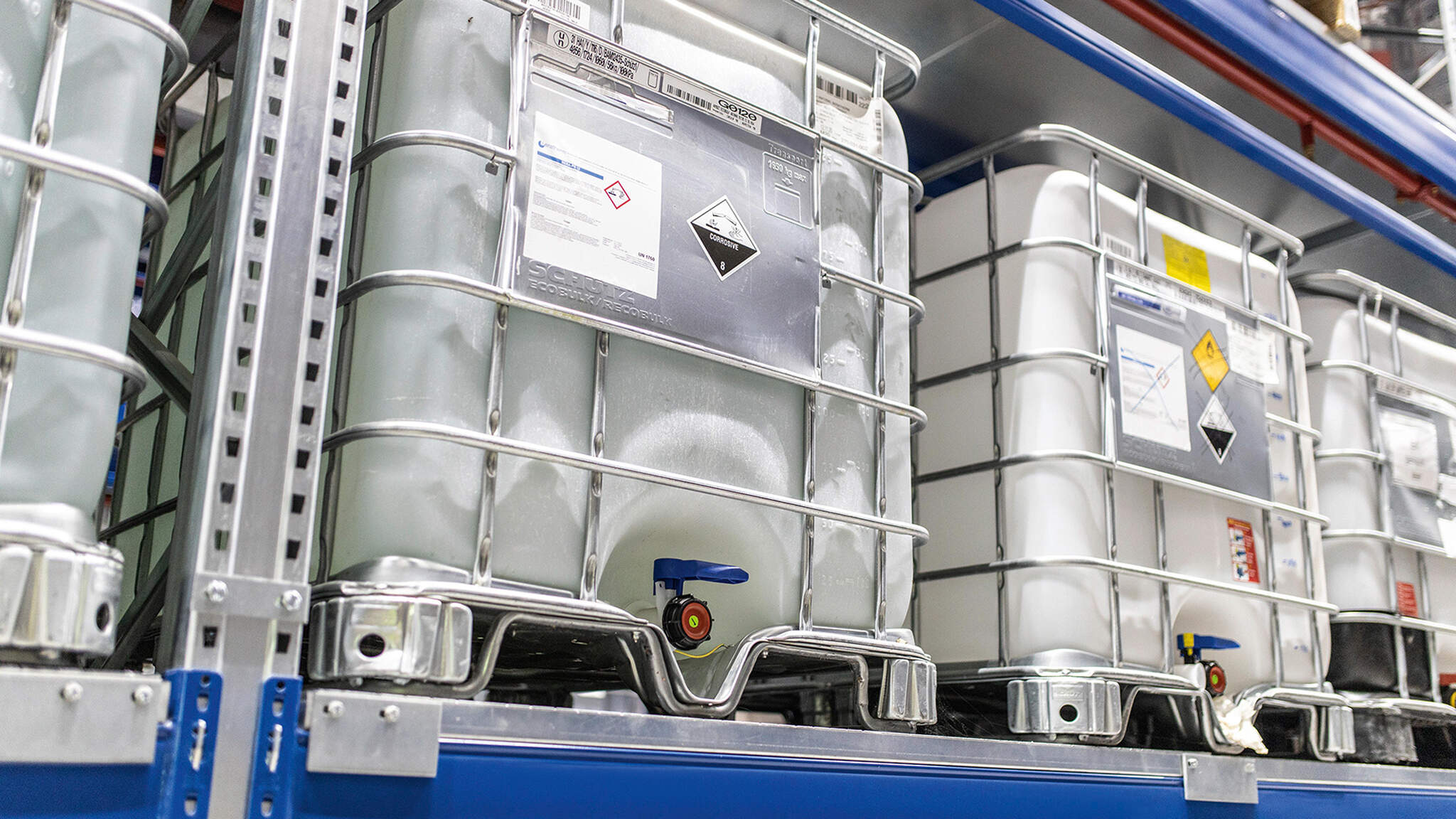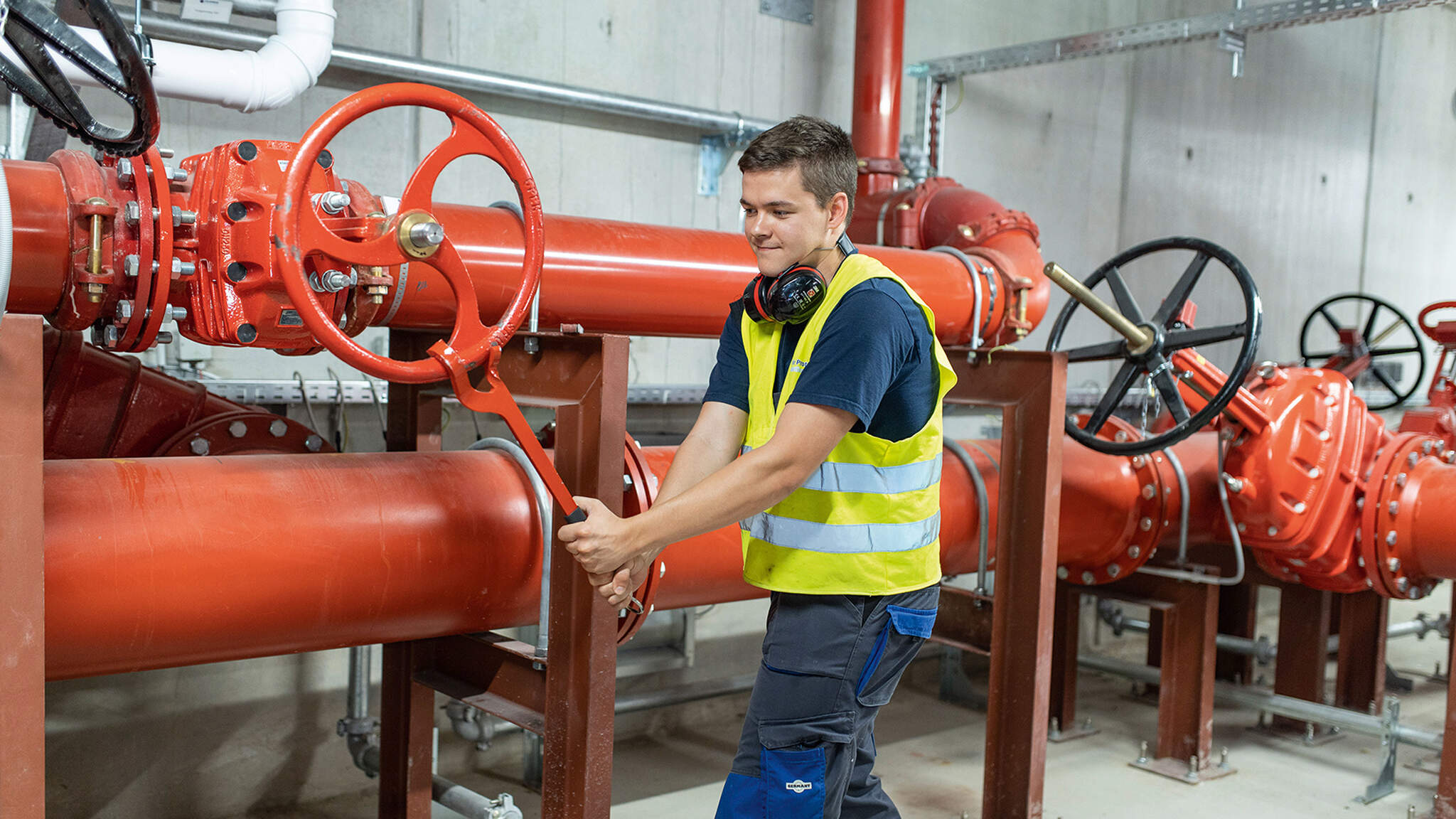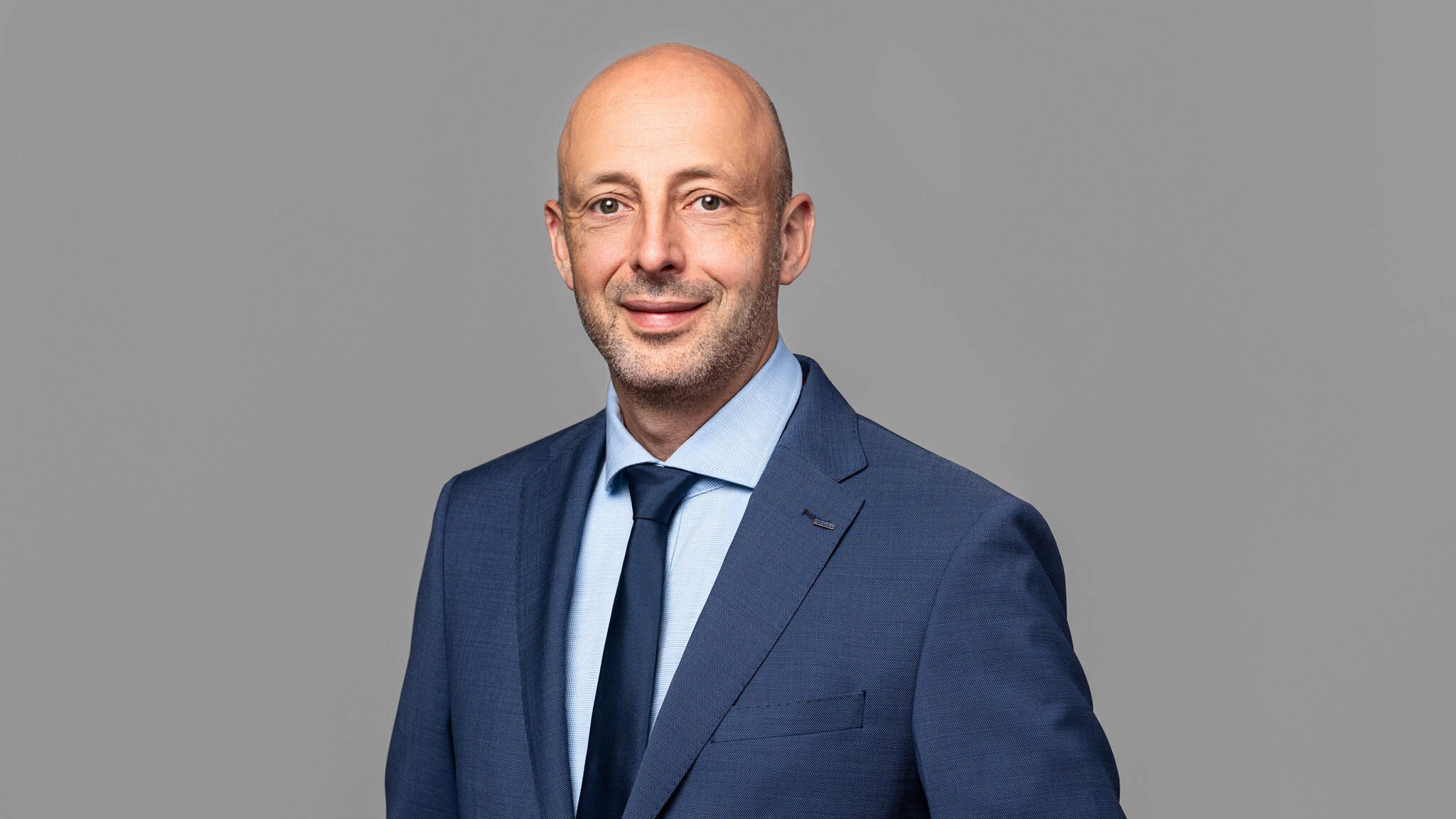When the chemistry is right
Many strands of the DACHSER network come together in Malsch near Karlsruhe. The expansion of the logistics center last year has taken contract logistics for hazardous materials customers to a new level.

Among the 332 locations in the DACHSER European Logistics branch network, which extends from Faro to Bucharest, Marseille to Oslo, the municipality of Malsch forms an important hub. Still, anyone unfamiliar with the area would need to look long and hard at the map to find this town in southwest Germany near the French border. At this location, positioned directly on the A5 motorway about 20 kilometers south of Karlsruhe, DACHSER has been operating a key goods hub since 2012.
Just recently, in May 2020, Malsch opened a new hazardous materials warehouse featuring the strictest safety measures. DACHSER invested more than EUR 20 million in its equipment, safety systems, and connections to the European and global DACHSER network. The new high bay storage facility covers 21,800 m2 and offers approx. 43,000 pallet spaces. It provides storage for intermediate bulk containers (IBC), even up to three levels
“With this new hazardous materials facility, we can offer the chemical industry in southwest Germany a strong network of specially equipped warehouses in Karlsruhe, Mannheim, Überherrn in Saarland, and Langenau near Ulm,” says Alexander Tonn, Managing Director European Logistics Germany. Bernd Großmann, General Manager of the Karlsruhe logistics center, adds: “The region is one of the leaders in chemical industry revenue. As such, there is strong demand there for logistics companies that can serve as a safe and reliable transportation partner while also offering safe storage of chemical products and hazardous materials.” A further advantage of the location is its excellent connections to France—the number one destination for German chemical exports.
A tailored solution
The new hazardous materials warehouse is a hive of concentrated activity. Electric forklifts whir through the aisles, while employees “pick” the goods with their scanners, lift up pallets loaded up with sacks, barrels, and other containers, and bring them to their next destination—either to the shelf or directly to the gates where the trucks are already waiting.
At first glance, the warehouse with its high shelves, long rows, and hustle and bustle seems perfectly normal. Upon closer inspection, however, many special features stand out: for example, the extensive piping system with a total length of over 60 kilometers, almost 30,000 shelf sprinklers, and more than a kilometer of drainage channels.
With its Chem-Logistics industry solution, DACHSER combines standardized logistics services and expertise in handling dangerous goods in a global network with bespoke solutions for customers from the chemical industry. In addition, the company operates central dangerous goods management systems for road and air & sea logistics and has 254 regional dangerous goods safety advisors worldwide.
The warehouse is divided into nine fire zones, each of which is equipped with an automatic fire extinguishing system with ceiling sprinklers. Most have in-rack sprinkler systems as well. Aspirating smoke detectors (ASD) are also installed in every zone. In addition, four of the zones have a gas warning system and an extinguishing system with a surfactant admixture. The floors are designed specifically to retain leakage and firewater: the floor level has been lowered and the resulting space waterproofed. Meanwhile, barriers at the wastewater inflows offer increased groundwater protection. The hazardous materials warehouse was approved in accordance with Germany’s Federal Immission Protection Act (BImSchG).

Overview in Malsch
“You can’t just get a hazardous materials warehouse like the one in Malsch ‘off the rack,’ as it were,” Großmann points out. “Before starting construction on the new facility, we met with our customers and with experts to determine their specific requirements regarding the warehouse and the handling of hazardous materials. Then, in cooperation with experts from DACHSER Head Office in Kempten and with the relevant authorities, we developed a tailor-made concept for a hazardous materials warehouse and made it a reality. As a result, the facility in Malsch boasts highly advanced technology and in many ways sets an example for other DACHSER locations.”
Partnerships based on trust last longer
“At this location, our scope of services includes distribution as well as procurement logistics and, in contract logistics, solutions tailored to customers in the chemical and numerous other industries,” says Florian Steinbrunn, Head of Contract Logistics in Malsch. In addition to storage, DACHSER provides a wide range of value-added services—all from a single source. This gives rise to particularly close customer relationships, some of which have lasted for over 15 years. “We know each other well, we trust each other, and so we can actively steer and continuously shape how we work together,” Steinbrunn says.
Großmann adds, “The parameters are clearly defined. We stock only those products that we can also transport using our groupage network, so that there are no gaps in the supply chain.” For this reason, direct lines connect the logistics hub to all of Europe’s economic centers. A total of 40 direct routes run daily to every DACHSER branch in Germany. “Due to our location, we’re also the ideal platform for Spain and our neighbors in France. These are major markets for us,” Großmann says.

Knowledge makes the difference
To serve these markets, employees need specialist knowledge, flexibility, and the ability to actively stay on top of things. “Good employees are extremely important, especially in chemical logistics,” Großmann says. “That’s why we run a lot of training courses, so we can always keep the knowledge they need for their demanding tasks up to date.” This has an effect on the overall team cohesion in Malsch. “Our employee turnover is very low. In operational areas, the average length of service with the DACHSER branch is more than ten years. We’ve trained many of our specialists ourselves,” Großmann says. Malsch currently has 57 apprentices undergoing their three years of training, which puts the training rate at about 13 percent—above average.
Großmann believes that this sets the course for further growth. All in all, last year the location handled just under 1.2 million shipments of goods with a total weight of more than 726,000 metric tons. Today, 75 regular transport services leave Malsch daily for the German market as well as to Austria, Belgium, the Czech Republic, Denmark, France, Hungary, Italy, Luxembourg, the Netherlands, Poland, Slovakia, Spain, Sweden, Switzerland, and the UK. Regions such as the Baltic or the Balkans are accessed via connections to DACHSER’s three Eurohubs, which also have short transit times. This offers a number of advantages, which Steinbrunn neatly sums up: “Our customers benefit from DACHSER’s efficient pan-European transport network as well as the services provided by DACHSER’s Air & Sea Logistics business field, with its daily route to Frankfurt airport.”
